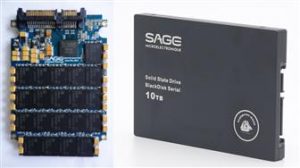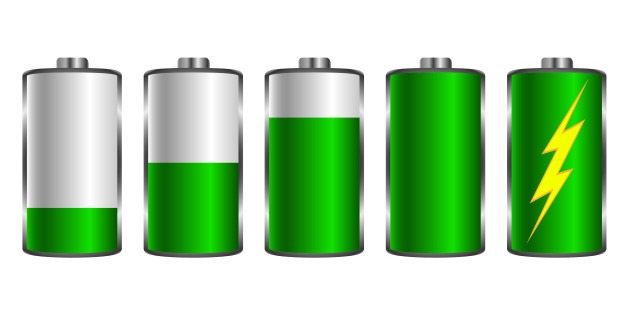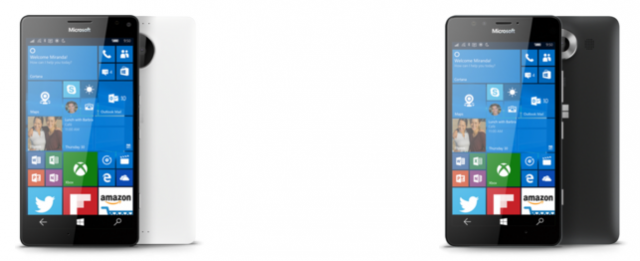Canaux
108470 éléments (108470 non lus) dans 10 canaux
 Actualités
(48730 non lus)
Actualités
(48730 non lus)
 Hoax
(65 non lus)
Hoax
(65 non lus)
 Logiciels
(39066 non lus)
Logiciels
(39066 non lus)
 Sécurité
(1668 non lus)
Sécurité
(1668 non lus)
 Referencement
(18941 non lus)
Referencement
(18941 non lus)
éléments par Desire Athow
BetaNews.Com
-

Maze Alpha is a nice phablet that offers great value for money [Review]
Publié: octobre 24, 2017, 7:47pm CEST par Desire Athow
When we reviewed the Maze Blade back in June, we were flabbergasted by the sheer amount of quality components that the Chinese vendor, Maze, managed to cram in this smartphone. The Maze Alpha is the bigger brother of the Blade and has an even higher specification without adding much to the price. Maze sent us the sample and Gearbest sells the Maze Alpha for just over £137 at the time of writing. Note that, while this price includes delivery, it is exclusive of any taxes that may be levied by customs or delivery companies. Want to buy tech from online Chinese retailers? Read this first.… [Continue Reading] -

Doogee BL7000 is an affordable smartphone with a huge battery and nice hardware [Review]
Publié: septembre 29, 2017, 11:54pm CEST par Desire Athow
Chinese smartphone manufacturer Doogee seems to be on fire; the outfit, which is several orders of magnitude smaller than bigger names like Lenovo, Huawei, Oppo and Xiaomi, has been pushing out new models like there’s no tomorrow. The vendor embraced a niche approach with the S-series (for secure), the BL series, the Mix (bezel-less), the Shoot series (for photography aficionados) and a few more. After the Doogee Mix and the Doogee T5 and just before we review the S60 rugged smartphone, we’re taking a look at the BL7000 with the first two letters meaning "Battery Life" and 7000 representing the battery capacity (in mAh). The phone… [Continue Reading] -

Gretel GT6000 is a good entry-level Android smartphone [Review]
Publié: septembre 26, 2017, 8:26pm CEST par Desire Athow
Gretel is not a company name you easily forget as it is associated with one of the more popular Grimm’s brothers fairy tales, Hansel and Gretel, one which features a house made out of cookies, biscuits, cake and chocolate and inhabited by a cannibalistic witch. This is likely to be the most memorable aspect of the GT6000. It is Gretel's flagship model. Sadly, with a quad-core processor and a component list that fits more into an entry level smartphone, it is likely to face some stiff competition from an ever bulging list of rivals Design The GT6000 is available in… [Continue Reading] -

Doogee Mix smartphone is great value for money [Review]
Publié: septembre 26, 2017, 5:45pm CEST par Desire Athow
The Chinese smartphone market works in such a way that its insularity has caused the number of small vendors to surge over the past three years, all competing for the hundreds of millions of potential Chinese smartphone users. At the last count, the number had reached 80, most of which are no household names; only Lenovo, Xiaomi and Huawei have managed to cross that east-west chasm. Now, a newcomer, Doogee, aims to challenge the status quo with a raft of new smartphones. Put aside, the slightly err… dodgy name, this Chinese brand aims to wow businesses with a mixture of… [Continue Reading] -

Maze Blade 4G is a superb affordable smartphone [Review]
Publié: juin 3, 2017, 12:14am CEST par Desire Athow
There was a time, not so long ago, when all you could get for £100 was a feature phone or one based on an antiquated operating system. Nowadays, the increasing competition in the far-east and in mainland China has caused prices to tumble down, so much so that there has never been so much choice if you’re after a so-called mid-market smartphone. Which brings us to a newcomer, Maze and its new mid-level device, the Blade, which it describes as being "sharper than ever." Now the term mid-level is used quite loosely here given that this smartphone costs under $110/£90… [Continue Reading] -

Sunvell T95X TV box: a web-focused, cloud-based client for those on a budget [Review]
Publié: mai 5, 2017, 1:22am CEST par Desire Athow
Businesses often envision the modern desktop computer as being a boring piece of kit, one that not only costs a lot of money but also doesn’t offer much in terms of innovation. The reality is slightly different; between dongle PCs, mini and micro PCs as well as all-in-ones, there’s plenty of innovation around if you know where to look. However, the biggest shift in computing in recent times, the move from Windows to Android, has yet to be replicated on the desktop where Microsoft’s operating system still rules the roosts. There are exceptions though and the Sunvell T95X is one… [Continue Reading] -

UMi Plus E: An affordable smartphone with premium aspirations [Review]
Publié: février 6, 2017, 11:40am CET par Desire Athow
Smartphones have replaced tablets and traditional computers for millions of users as the preferred -- and often only -- way to access the internet. While the initial waves of devices were nothing more than souped-up feature phones, the past couple of years have seen the arrival of models that are not only far more sophisticated but also significantly more powerful than their predecessors. Take the UMi Plus E for example which packs the sort of firepower that you would expect from a mid-range to high end laptop, but with a price tag that’s more than reasonable. But there’s more to… [Continue Reading] -

What is Huawei's XLabs Wireless?
Publié: novembre 25, 2016, 3:50pm CET par Desire Athow
During this year's, seventh Global Mobile Broadband Forum in Tokyo, deputy chairman of the board and Huawei Rotating CEO Ken Hu took to the stage to share his vision of the mobile future and presented the XLabs Wireless. This brand new initiation aims to be the platform which will unite carriers, developers and companies from different verticals. Together, they must build an open ecosystem of mobile apps which will reshape the future of business, entertainment, and everyday living. XLabs Wireless consists of three elements -- the mLab, with the focus on people, vLab, with the focus on verticals, and hLab, focusing… [Continue Reading] -

Lenovo ZUK Z2: Promising smartphone, with a few caveats [Review]
Publié: septembre 30, 2016, 5:10pm CEST par Desire Athow
Lenovo is already a well-established brand in Western Europe thanks to its personal computer brand which counts the legendary ThinkPad range and German manufacturer, Medion, amongst its ranks. It also absorbed storage vendor Iomega, IBM’s Intel-based server business and NEC personal computer range. The company has acquired phone manufacturer Motorola, inheriting yet another iconic brand whose name still carries a lot of value for a mainstream audience. But the latest move of the Chinese company, which is also the biggest PC vendor in the world, has been surprising. It launched a division called Zuk, which is a Chinese-only brand, apparently aiming to… [Continue Reading] -

Huawei Honor 8: Good Android smartphone that fails to stand out [Review]
Publié: septembre 5, 2016, 8:56pm CEST par Desire Athow
Two years ago, Huawei, one of the world’s largest mobile phone vendors, caused a surprise by unveiling a new brand called Honor which the parent company described as being a brand run by millennials for millennials. Honor unveiled its latest flagship handset, the Honor 8, which is roughly equivalent to the Huawei P9 launched in April this year. While Honor’s initial boost came because its handsets were generally seen as more affordable options compared to the big guns, the Honor 8 aims to change this with a much higher price tag and a commensurate improvement in hardware. Both moves aim… [Continue Reading] -

How HP has changed after the split [Q&A]
Publié: août 30, 2016, 7:47pm CEST par Desire Athow
We recently sat down with George Brasher, the managing director for UK and Ireland at HP, to discuss his approach to business and how the company has changed since the split from HP Enterprise. You can read the Q&A below. ITPP: People may think they know HP, but can you describe what the company does in your own words? GB: We’re actually a very young company -- less than a year old, and the world’s largest start up! HP, as was, separated in November 2015 into two listed Fortune 100 companies; HP Inc. (HP), the personal systems and printing company, and… [Continue Reading] -

Sage Microelectronics announces world's first 10TB 2.5-inch SSD
Publié: décembre 2, 2015, 11:48am CET par Desire Athow
 A little-known Chinese manufacturer, Sage Microelectronics, has managed to out-gun its much bigger rivals (Kingston, Sandisk and Samsung to name a few) by bringing to market the world’s first 10TB 2.5-inch (9.5mm) SSD.
A little-known Chinese manufacturer, Sage Microelectronics, has managed to out-gun its much bigger rivals (Kingston, Sandisk and Samsung to name a few) by bringing to market the world’s first 10TB 2.5-inch (9.5mm) SSD.The drive was first demonstrated last month at the China Data Summit 2015 in Beijing and comes months ahead of its previous launch target. Samsung is the only big SSD vendor that has announced an SSD larger than 10TB.
At 15.36TB, its PM1633a is the biggest drive ever announced, surpassing significantly the 10TB drives that Seagate and Western Digital are expected to unveil in 2016. But it has yet to be brought to market and is likely to be thicker than the industry-standard 2.5-inch thickness.
What makes the feat even more noteworthy is that it uses a single layer PCB where most would settle for a couple and used MLC rather than TLC NAND to improve the useful lifespan of the product.
In addition, the company engineering team, headed by Dr. Jeromy Luo and Professor Chris Tsu, have used a denser multi-chip packaging and tweaked the controller so that the SSD’s performance remains more or less constant over time, regardless of how full it is.
The flip side is that the SSD is likely to be far slower than the competition as it focuses on features rather than performance. It would still be far faster than the enterprise hard disk drives currently available on the market.
The average retail price of SSDs has been steadily falling over the past three years with the demand for solid state storage driving investment and the rapid transition to finer geometries, something that allows higher capacities to reach the market while still remaining in the black.
A consumer-grade 1TB SSD drive currently costs around £250 while a 4TB hard disk drive can be had for around £80.
Published under license from ITProPortal.com, a Net Communities Ltd Publication. All rights reserved.
-

Huawei's new smartphone battery charges in only 11 minutes
Publié: novembre 17, 2015, 4:47pm CET par Desire Athow

Chinese tech behemoth, Huawei, came up with a technology that could revolutionize batteries, with smartphones likely to be the primary target.
In a test, two batteries, one apparently for a smartphone (3,000mAh) and one for a feature phone (600mAh) were charged up to 10x faster than traditional methods allowed.
Rough calculations show that the 3,000mAh battery could reach near full capacity in about 11 minutes. The technology, which could be used in a number of other products, is likely to attract the attention of laptop manufacturers and major battery makers like Foxconn Electronics.
Although it is far too early to speculate on the performance of batteries boosted with the heteroatoms technology used by Huawei, one can expect it to improve charging laptop times by a similar proportion, cutting that down to less than an hour in most cases.
For now, Huawei hasn’t said whether it will license the technology to other companies, including potential competitors, or when the product will appear in commercial products.
The video showed Huawei-labelled batteries in a commercial form factor, which means that they are almost certainly ready for mass production for existing Huawei smartphones; which again would imply that you will be able to swap them for existing batteries.
What’s more, the 3,000mAh battery had an energy density of more than 620Wh/L which is very close to the best performing Lithium Ion batteries on the market.
It suggests that Huawei has either managed to seriously beef up its research facility (including its Watt Lab) or has teamed up with a leading battery manufacturer. We suspect the first scenario to be the more likely given that Huawei researchers tinkered with the very fabric of the battery.
While laptops have comparatively lower than expected mAh rating, they provide the power at a much higher voltage compared to laptops (between 10.5V and 11.5V for most models) delivering a much higher Whr rating, up to 10x compared to smartphones.
Published under license from ITProPortal.com, a Net Communities Ltd Publication. All rights reserved.
Photo credit: Shmizla / Shutterstock
-

Microsoft Lumia 950 XL vs Lumia 950: Which is the better buy?
Publié: novembre 17, 2015, 10:32am CET par Desire Athow

Microsoft recently announced two flagship devices, the Lumia 950 XL and the Lumia 950, both of which run its Windows 10 Mobile operating system and share many features: same screen resolution, same amount of onboard storage and system memory.
The 950 XL is certainly the better purchase out of the two models. Yes, it is bigger than the 950 and more expensive, but there’s three key features that will win businesses and individuals alike.
It has a bigger battery -- 3,340mah vs 3,000mah -- which, according to Microsoft’s own numbers, should allow users to squeeze that all-important extra hour when making calls or browsing the web.
The system-on-chip used by the 950 XL (the Snapdragon 810) runs about 10 percent faster compared to the one on the 950 (the Snapdragon 808) and has two extra cores, which should come handy in tackling demanding tasks.
Perhaps the most important point is that Microsoft is giving away a free Display Dock when one pre-orders a Lumia 950 XL. Microsoft has yet to give pricing details for this gadget but it is likely that it retails for far more than £50 (i.e. the price difference between the 950 XL and the 950).
And for any business users, this may well be the perfect accessory to match their new Lumia handset. The offer is valid for the purchase of the 950 XL and offer registration between November 20 2015 and January 31 2016.
Just connect your devices, keyboard, mouse and your monitor to it and it transforms into a fully-fledged desktop; your phone will automatically detect these and switch to Continuum mode, which brings up the familiar Windows 10 desktop.
More details about the Microsoft Display Dock offer can be found here.
Published under license from ITProPortal.com, a Net Communities Ltd Publication. All rights reserved.